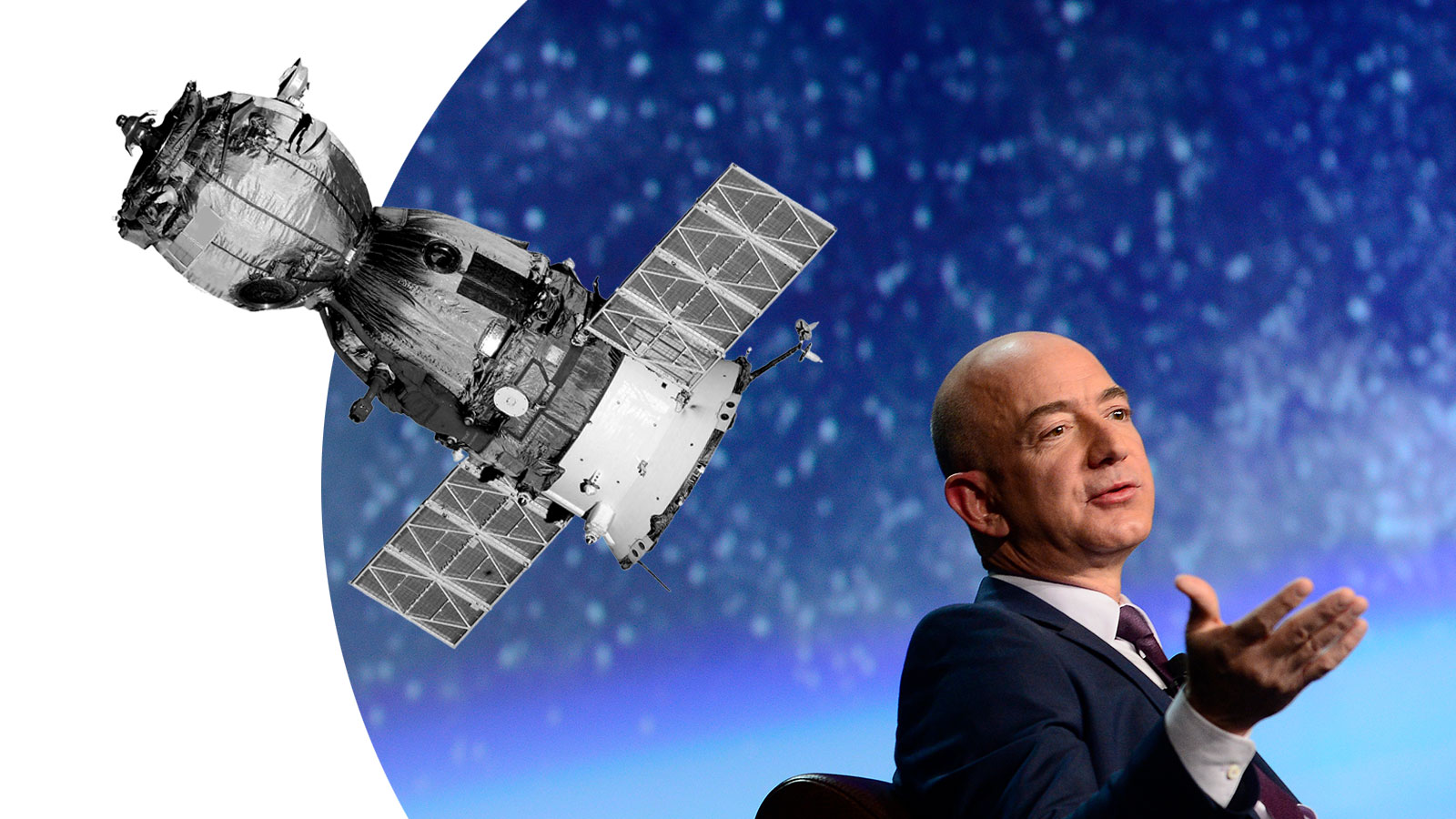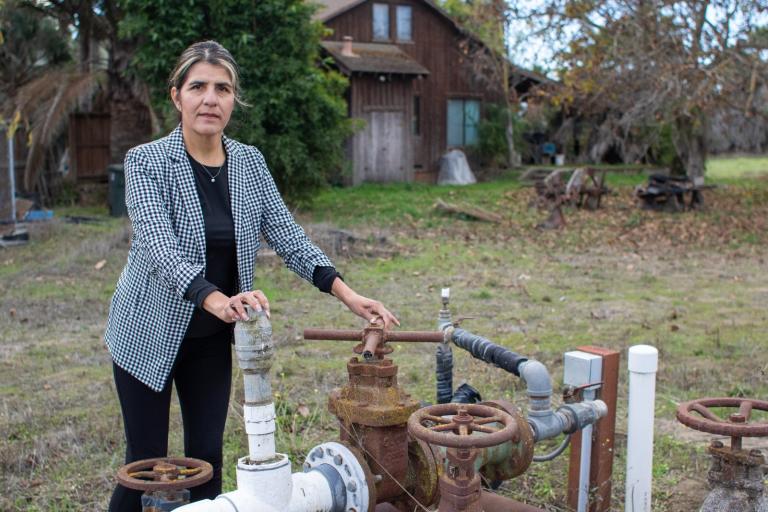In February, Jeff Bezos took to Instagram to announce a new project: The world’s richest person would spend $10 billion of his then–$130 billion net worth to “save Earth.” A slew of think pieces followed — where would the money go the furthest?
Not in building solar farms, a solar energy analyst told the Atlantic; the sector already had more than enough capital chasing after it. What about in political organizing to get smart climate policies passed by Congress? Or in research and development to scale up solutions that are too expensive right now, like long-duration batteries that will help the electric grid smooth out the variability of renewables?
Bezos finally named the recipients of the first $791 million from the fund last month, and a large chunk of the money went to a climate solution that pundits hadn’t seen coming: two projects that will reveal where greenhouse gas emissions are coming from, and how they are changing over time.
“If no one invests in that, then we’re basically flying blind in trying to tackle climate change,” said Craig Hanson, vice president of food, forests, water, and the ocean at the World Resources Institute (WRI), which was one of the two beneficiaries.
WRI is using about half of its $100 million donation from Bezos to build software that can track the emissions impact of land-use changes, like when wetlands are cleared or new forests are planted, using satellite data. The other beneficiary, the Environmental Defense Fund (EDF), will use part of its $100 million from Bezos to launch a new satellite called MethaneSAT that will identify and monitor sources of methane emissions in real time. The data collected by both projects will be available to the public for free.
Science isn’t flying entirely blind on either of these metrics, but the data lacks granularity. There are scientists studying the carbon that’s sucked up and released by forests, grasslands, and other natural systems, and other researchers studying land-use change via satellite, but there’s not yet a tool that brings the two together to create a monitoring system that’s global in scale, according to Hanson. Researchers have found methane leaking all along the oil and gas supply chain, and shown that it’s much more than what’s reflected in the Environmental Protection Agency’s greenhouse gas inventory — at least 60 percent higher, according to research by EDF. But they don’t know exactly where it’s coming from, and neither do the companies operating the infrastructure.
Better understanding carbon fluxes in our natural systems is essential to getting climate change in check, especially as nature-based solutions like reforestation and storing more carbon in the soil are scaled up in the coming years. Hanson said WRI’s monitoring system will identify what’s actually happening — where forests are growing or shrinking, where wetlands are being cleared — and help determine where to prioritize interventions. It will also help to illuminate a phenomenon called “leakage,” which is when a change in one area, like converting farmland to forest, can lead to the creation of farmland elsewhere on the planet, essentially canceling out the benefit. To that effect, the tool will help hold governments, companies, and NGOs accountable by measuring whether their nature-based initiatives are actually working.
EDF’s methane satellite will fill a similar gap. Just last week, more than 60 oil and gas companies, including BP and Shell, signed on to an initiative to track and reduce methane not only from their own operations but from partner companies’ as well. (No American companies joined.) They’ll have to report their emissions based on measurements taken from their actual equipment, rather than based on engineering estimates, which is how they have done it in the past (and which is why the EPA’s numbers are off). Mark Brownstein, senior vice president of energy at EDF, said MethaneSAT could be used both to help companies report their emissions and to track whether they are keeping their promises.
Some companies intentionally vent gas at the surface of wells because it can be cheaper than capturing it, but some states are trying to curtail that practice, and MethaneSAT could identify rulebreakers. But a lot of the methane from the oil and gas industry is leaked unintentionally, and methane leaks are hard to find. The gas is invisible and odorless, and leaks can occur pretty much anywhere from oil and gas wells to pipelines to power plants. They occur because of equipment malfunctions, poor maintenance practices, or because a facility just wasn’t designed to minimize methane emissions, explained Brownstein. And in the near term, while much of the world will still run on oil and gas, the leaked methane will continue to add up.
“It’s driving a lot of the warming that we’re experiencing right now,” Brownstein said, “and is fundamentally fixable.”
Methane doesn’t last long in the atmosphere — it breaks down after about 10 years into carbon dioxide and other gases. But it’s a much more powerful greenhouse gas than CO2, so much so that over the first 20 years after it’s released, it has about 86 times the effect that CO2 does on global average temperatures. Cutting methane emissions would have relatively immediate benefits.
“If we got all of our methane emissions to zero tomorrow, global temperatures would fall a bunch, maybe 0.3 or 0.4 degrees [C],” or 0.5 to 0.7 degrees F, said Zeke Hausfather, a climate scientist at the research nonprofit the Breakthrough Institute who’s not involved with MethaneSAT. Global average temperatures have risen by about 1 degree C (1.8 degrees F) since 1880.
Research has shown that a small number of leaks are responsible for the vast majority of methane emissions from gas infrastructure. And it’s in the interest of gas companies to fix them, since they are losing money on lost product. The challenge is finding those “super emitters.” There are time-intensive ways to do it, like attaching sensors to cars or drones and following the path of gas pipelines or flying over oilfields. But there’s no global, continuous, real-time monitoring system in place — the gap that EDF aims to fill with MethaneSAT.
Brownstein said EDF’s goal is to launch the satellite in 2022. The data it collects will enable anyone to zero in on where large sources of emissions are coming from — in many cases down to the company responsible — and to see how they are changing over time. Interested parties will be able to track whether reductions are being made and climate promises are being kept.
Brownstein said on-the-ground measurements will still be important in major oil- and gas-producing areas like the Permian Basin in Texas, where the field is so crowded with operators that it would be impossible for MethaneSAT to attribute a leak to a particular company.
For that reason, it’s not a silver bullet. But Hausfather said the satellite will be a great tool to have, especially when combined with stricter regulations on methane emissions that the Biden administration is likely to try to enact. “You can do a lot through policy to reduce leakages in the natural gas system,” he said. ”We just haven’t as a society done a particularly good job with that so far.”



